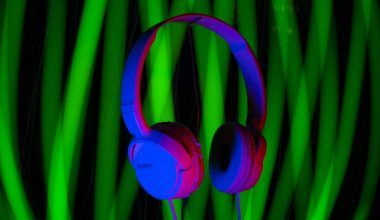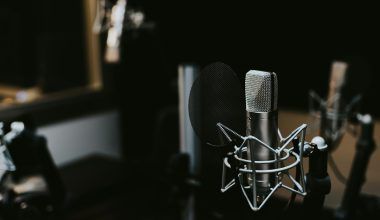Why Do Mono and Stereo Sound Matter?
If you’ve ever listened to music, a podcast, or watched a movie, you’ve already experienced mono sound and stereo sound. These are two ways sound is recorded, played, and heard. But what do they really mean? Why is it important to know the difference between mono and stereo sound? Don’t worry; I’ll explain it to you in the simplest way possible.
Think of it like this: mono sound is like having one person talk to you. You hear everything clearly, but it’s coming from one place. Stereo sound is like being in a room where you hear voices or sounds coming from different sides—it feels more real and lively. Both have their strengths, and the choice depends on what you need the sound for.
Let’s dive in and explore the difference between mono and stereo sound, their uses, and how to decide which one is best for you.
What is Mono Sound? (The Simple Explanation)
Mono, short for monophonic, means “one sound.” When sound is recorded or played in mono, everything comes from a single channel. Whether you’re listening through one or two speakers, the same sound plays from both.
Imagine This:
Think about a voice on a phone call. No matter which ear you put the phone to, you hear the same thing, right? That’s mono sound. It doesn’t try to create any special effects or sound directions—it just delivers the message clearly.
Why Mono is Useful:
- simple and clear: Mono is great when you don’t need fancy effects.
- reliable: Works well on any device, whether it’s a small speaker or an old radio.
- small in size: Mono files take up less space, which is great if you’re saving a lot of recordings.
Where Mono Sound is Used:
- Podcasts and audiobooks: You want the voice to be clear, not fancy.
- Radio: Many AM radio stations use mono because it’s straightforward.
- Public announcements (PA systems): Think of airports or train stations. Everyone hears the same message, no matter where they are.
What is Stereo Sound? (Made Simple)
Stereo means “two sounds.” When sound is in stereo, it’s split into two channels: left and right. This creates a feeling that the sound is coming from different directions.
Imagine This:
You’re at a live concert. The guitar is on your left, the drums are behind you, and the singer is in front. Stereo sound tries to recreate that feeling of being surrounded by music. It feels like the sound is alive and moving around you.
Why Stereo is Special:
- Adds depth and space: Makes the sound feel bigger and more real.
- Creates a better experience: Perfect for music and movies where you want to feel immersed.
- Directionality: You can “place” sounds in different directions, like making a guitar sound like it’s on the left side and drums on the right.
Where Stereo Sound is Used:
- Music: Most songs today are recorded in stereo for that rich, full experience.
- Movies and TV: Surround sound systems rely on stereo to make you feel like you’re inside the scene.
- Gaming: Stereo helps you hear where sounds are coming from—like footsteps in a game.
Key Differences Between Mono and Stereo Sound
Here’s a quick comparison to make it easy to remember the difference between mono and stereo sound:
| Feature | Mono Sound | Stereo Sound |
|---|---|---|
| Number of Channels | 1 (single channel) | 2 (left and right channels) |
| Sound Direction | Comes from one source. | Feels like it’s coming from different directions. |
| File Size | Smaller file size. | Larger file size. |
| Best For | Speech, announcements. | Music, movies, and immersive audio. |
| Listening Experience | Simple and clear. | Rich and dynamic. |
When Should You Use Mono or Stereo?
You might wonder, “Which one is better—mono or stereo?” The answer depends on what you’re doing. Let’s break it down:
When to Use Mono Sound:
- Podcasts or audiobooks: You just need clear voices without fancy effects.
- Public speeches or announcements: You want everyone to hear the same thing.
- Old devices: Some old radios and record players only support mono.
When to Use Stereo Sound:
- Music production: Stereo makes instruments and vocals stand out.
- Movies and gaming: Stereo creates an immersive experience.
- Live concerts or performances: Stereo brings the event to life.
Why Understanding the Difference is Important for Mixing
If you’re into music or sound editing, knowing the difference between mono and stereo sound is a must. Here’s why:
- Stereo for Creativity:
- You can “pan” instruments to different sides, like keeping drums in the center and guitars on the left.
- Add effects like echo or reverb to specific channels to create a sense of space.
- Mono for Compatibility:
- Mixing in mono ensures your track sounds good even on mono devices.
- Mono avoids problems like phase cancellation (when two sounds cancel each other out).
Quick Tip for Mixers:
Always test your mix in mono to make sure it sounds clear and balanced. Then switch to stereo to add the “wow” factor.
How Mono and Stereo Sound Affect Your Experience
Imagine you’re listening to your favorite song. In mono, it might feel flat, like everything is coming from one spot. But in stereo, the same song feels alive—the guitar feels like it’s coming from the left, the vocals from the center, and the drums from the right. That’s the magic of stereo!
FAQs About Mono and Stereo Sound
1. Can you convert mono to stereo?
Yes, you can. But it won’t create true stereo sound; it will just duplicate the mono signal into two channels.
2. Is stereo always better than mono?
No. It depends on the situation. Mono is better for speech or simple setups, while stereo is great for music and immersive audio.
3. Do all devices support stereo?
Most modern devices do, but some older systems only support mono.
4. Why is stereo sound more expensive?
Stereo requires more equipment and expertise to record and produce, which adds to the cost.
A Short History of Mono and Stereo Sound
In the early days of audio, everything was mono. Think of old radio shows or records—they were simple, but effective. Then came stereo in the mid-20th century, and it changed everything. Suddenly, music and movies felt alive, as if you were there in the moment. Today, stereo is the standard, but mono still has its place in certain situations.
Bringing It All Together
The difference between mono and stereo sound is not just technical—it’s about how we experience sound. Mono is simple, reliable, and great for clear communication. Stereo is dynamic, immersive, and perfect for creative projects. Understanding these differences helps you make better choices, whether you’re a musician, a sound engineer, or just someone who loves great audio.
So next time you listen to a podcast, mix a song, or watch a movie, think about the sound and how it’s delivered. Is it mono or stereo? And how does it make you feel?
Related Articles:
For further reading, explore these related articles:
- How to Become a Successful Music Artist in India in 2024?
- Promo Cards on Spotify: A Game Changer for Artists
- Understanding ISRC Codes and Their Importance in Tracking and Distributing Your Music
For additional resources on music marketing and distribution, visit Deliver My Tune.






